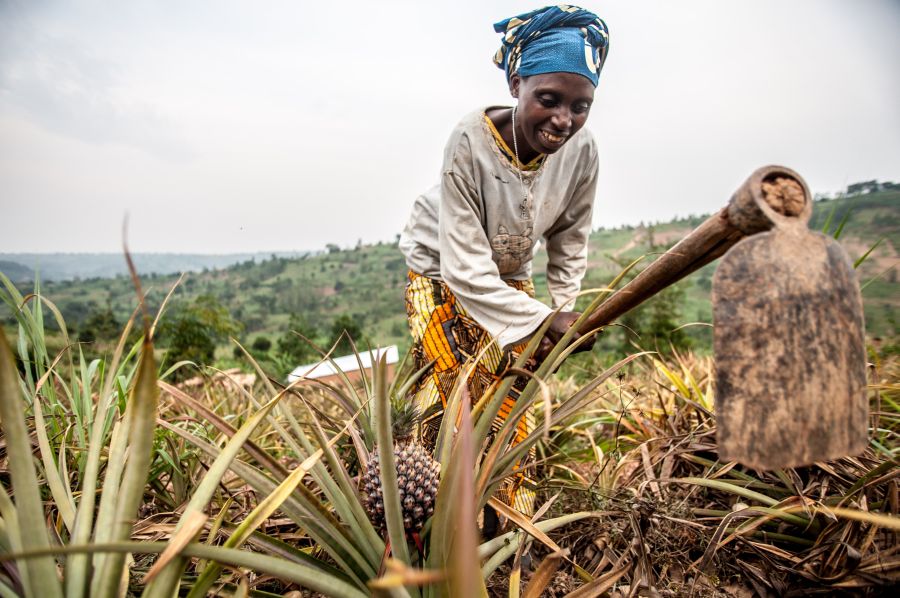
Regional balance of trade improved in the height of the Covid-19 pandemic, with lower imports, as Kenya’s manufactured products and demand for Tanzanian minerals held up the economies.
According to a report by the United Nations Economic for Africa (Uneca) and Trade Mark East Africa (TMEA) released Wednesday, Kenya registered an increase in exports of manufactured products, especially non-food industrial supplies and machinery and other capital equipment while demand for Tanzanian gold increased by 33.6 per cent between January and November.
The report is titled Waving or Drowning? The impact of Covid-19 Pandemic on East Africa trade.
“Kenya’s exports dropped by 33 percent in April due to the dramatic 83 percent decline in re-exports but started increasing in the subsequent months to its peak in November, while Tanzania experienced a relatively strong export performance during the pandemic period, especially in the third quarter driven by increased mineral exports,” the report says.
Sustained growth
Gold exports alone in Tanzania earned $2.85 billion representing a 33.6 per cent increase between January and November 2020, on account of both increased volumes and price.
Uneca director in East Africa Dr Mama Keita said joint co-operation between regional governments months after Covid-19 outbreak, resulted in increased intra-trade and the governments should learn from the pandemic that more joint trade policies are needed going forward.
“This report sends out important messages, notably the urgent need to diversify countries’ economies and export base if they are to be more resilient to external shocks and register strong and sustained growth rates in the future,” said Dr Keita.
The East African Business Community Chief Executive Peter Mathuki attributed the increased intra-trade to increased processed products within the region.
“EAC companies have increased production of finished goods making it easier to trade within member states with ease,” said Mr Mathuki.
Corridor hitches
The report also notes the contraction of imports through both the ports of Dar es Salaam and Mombasa with the latter registering the highest drop in imports of 33 per cent, followed by Uganda at 31 per cent.
Immediately after the outbreak, the ship dwell time at Mombasa port increased by 48 per cent and berth time increased by 52 per cent, with cargo transit from Mombasa to Malaba border with Uganda, increased to 11 days from seven days by the second quarter of 2020.
The time taken to transport goods via the Mombasa-Busia route was nearly three times higher.
On the Central Corridor from Dar to the hinterland, transit time doubled. This was marked by transit challenges at border points.
On a positive outlook, aggregate exports from the region declined to their lowest value in April 2020, however, they started recovering with the third quarter of 2020, and most of the EAC Partner States’ exports surpassed their 2019 levels.
“Data from this research informs us of the important role trade facilitation plays in the regional economy. We need to ramp up trade facilitation efforts to spur innovation, and we urge the government to incentivise priority goods so to protect lives,” said TMEA CEO Frank Matsaert.
But a major casualty of the Covid-19 crisis has been informal cross-border trade, which has struggled to recover from restrictions on cross-border travel even after the opening of borders.
Policy changes
For example, the report’s analysis of Uganda informal cross-border trade declined precipitously from an estimated $44 million in the first quarter of 2020 to just $1 million by April 2020.
Even the re-opening of Uganda’s borders in September 2020 did not revive informal cross-border trade signalling the pandemic’s impact was profound and providing anecdotal evidence that this pattern has been replicated across the region.
The report recommends a number of policy changes:
(a) provision of financial and regulatory support to key export sectors especially those have shown resilience;
(b) importance of strengthening regional value chains, particularly as the region moves into the implementation stage of the African Continental Free Trade Area (AfCFTA);
(c) that EAC members double down on policies to diversify their economies and the need to address the challenges facing informal cross-border traders to help communities heavily dependent on cross-border informal trade;
(d) to support development and implementation of technological innovations such as the Regional Electronic Cargo and Driver Tracking System to address bottlenecks that have arisen during the pandemic along the Northern and Central corridors.
This story was first published in The EastAfrican print version on February 20, 2021.

